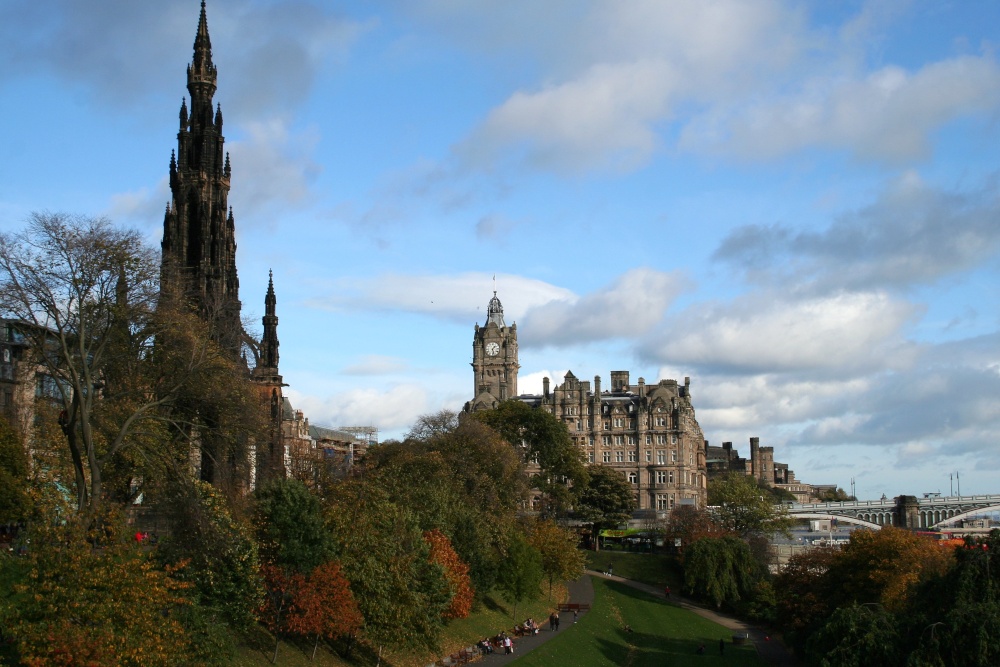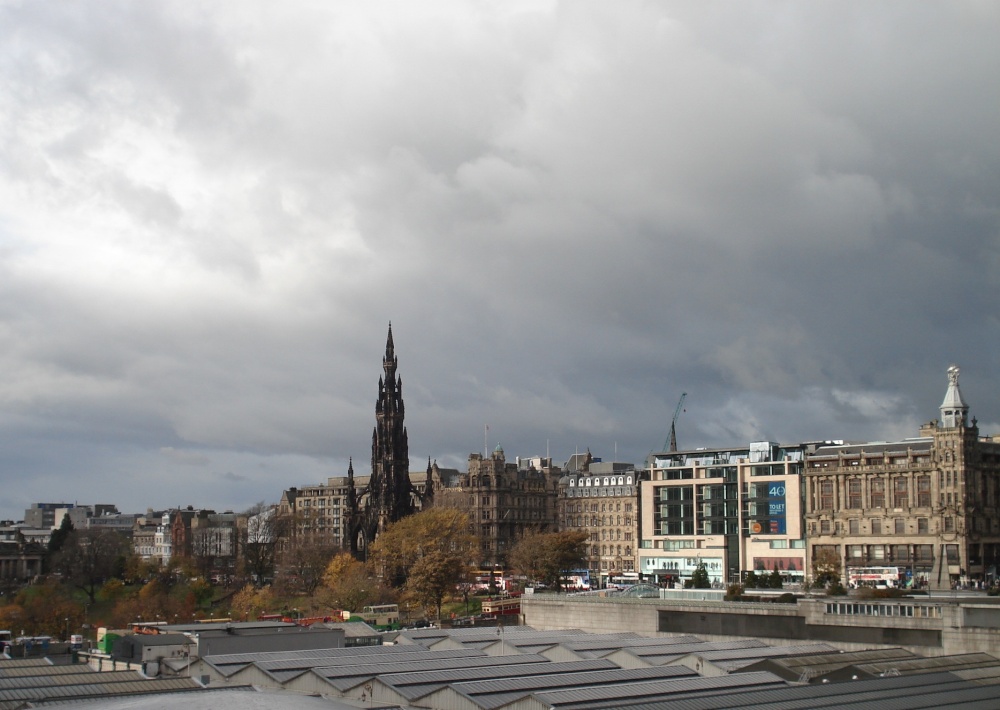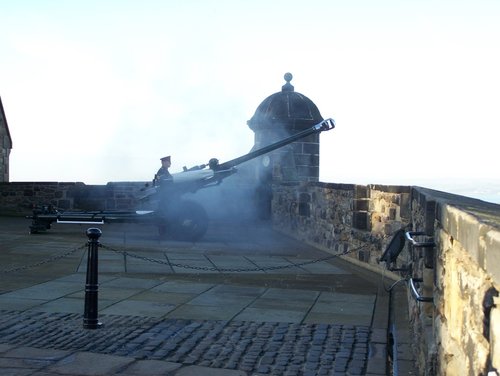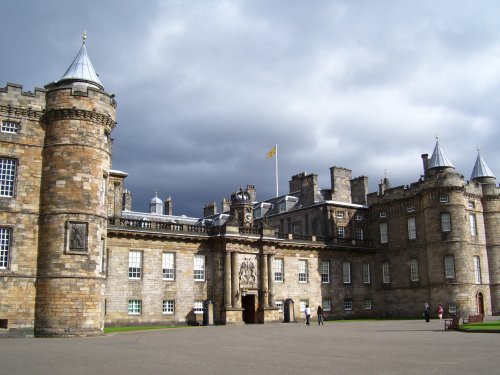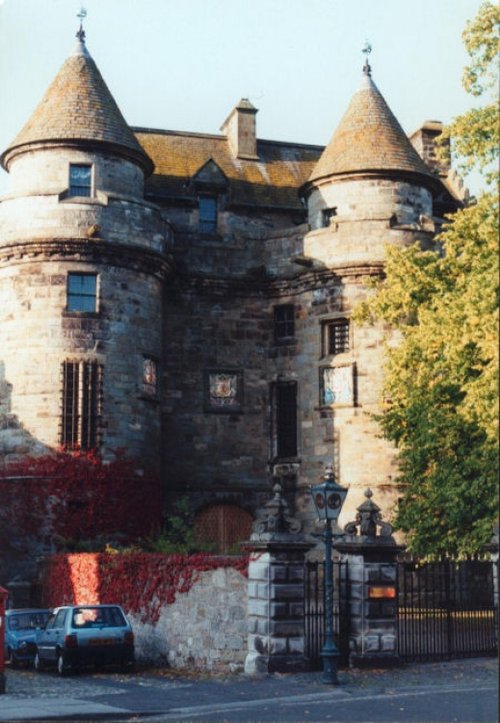Pictures of Edinburgh
About Edinburgh
Edinburgh is one of Europe's most stunning capitals. Its natural setting spread over a range of hills, overlooked by "Arthur's Seat" a miniature-like mountain, greatly contributes to the charms of Edinburgh. At the heart of this bustling city lies a mighty castle with over one thousand years of history. The views from the castle over the city rival those of Paris, seen from the dizzy heights of the Eiffel Tower.
Historically, there is evidence of Iron-Age occupation on Castle Rock, Calton Hill and Arthur's Seat. Later, in medieval times Edinburgh spread along the ridge running from the castle to the Abbey of Holyrood. For a time the city was contained by the Kings Wall built by James II in the mid-15th-century which divided it from the castle by the length of a bowshot. The city soon expanded, the Flodden Wall was built after Scotland's defeat by the English at Flodden in 1513, and for some 250 years there-after the city followed the shape of the wall.
The 18th-century saw Edinburgh as the home of philosophers, wits, poets and scientists. They brought the cosmopolitan atmosphere that to this day still pervades right through this magical city and helps to draw the thousands of visitors that flock here from all parts of the United Kingdom, Europe and beyond.
Edinburgh is part of what is traditionally called the "Lowlands" of Scotland, a description which hints of flatness and a lack of variety. Certainly, the Lowlands are less rugged than the North-West Highlands, they do not have their challenging mountainous grandeur, but they do have softly flowing hills, a remarkable coastline, great towns and cities of which Edinburgh, the most historic, is king.
The city changed during the Georgian Era when there was much dissatisfaction with the state of what is now called the "Old Town". This led to the capital spreading further north to an area beneath the castle, laid out by James Craig. The loch below the castle was filled and replaced by Princes Gardens, later handsome Georgian houses appeared along Princes Street, Queen's Street and Georges Street, allowing the more wealthy citizens to move from the old town to take up residence in the new.
Once you arrive in the city you immediately know you are somewhere special, everywhere you travel there is something new and unusual to catch they eye and capture your imagination, be it historic statues or magnificent fountains. The city is sufficiently compact to be explored on foot, which is the best way to get to know it, and to ensure you miss nothing. It is in the old part of the town that you will find most of the historic buildings for which the city is famous.
The main street is the famous "Royal Mile" a colourful street extending from Edinburgh Castle west of the city, to the new Scottish Parliament Building and the Palace of Holyroodhouse, on the eastern side. The Royal Mile is home to a rich variety of shops, boutiques, restaurants, cafe's and inns. It is also where you will find The Scotch Whisky Heritage Centre, John Knox's House, Cannon Gate Kirk and St. Giles Cathedral. The High Kirk of St. Giles is probably the only Presbyterian church to display a Chinese dragon. Knights of the Thistle, the Scottish equivalent to England's Garter knights, have their crests on show in it's Thistle Chapel, amongst these is the Chinese dragon, the emblem chosen by Lord Maclehose, a former Governor of Hong Kong.
At the foot of the Royal Mile near to the Scottish Parliament, visitors will find the excellent Dynamic Earth Centre, and just a short distance away, to the south of the High Street is the National Museum of Scotland. The city is home to the Edinburgh Fringe Festival, the largest arts festival in the world, and is also the home of the world's most famous Military display - the unique, spectacular, Edinburgh Military Tattoo, held on the Esplanade of Edinburgh Castle. The tattoo is performed in the twilight against an explosion of lights which perfectly compliment the strict marching and music of the military bands.
The new town is a shoppers delight, everything is here from swirling Tartan kilts, to delicatessen's stocked to the rafters with Scottish specialities, and sweet shops with Edinburgh rock. Famous jewellers are represented, antiques and art galleries, then for resting tired feet, to the north of the centre is the luxuriant Royal Botanic Garden with its fountains, statues, lush greenery and vibrant flowers. Since they were founded in the 17th-century, these gardens have been a place of tranquillity for the city's residents and tourists.
The "booming" sound heard over the city each day comes from the "One O'clock Gun" at Edinburgh Castle. This is fired each day at the same time, save for Sunday. The castle dominates Edinburgh, it is considered by many to be an icy epicentre which throughout its long history has assumed many roles, depending on the sympathies of those in occupation. It has its daunting places, but is also very beautiful and well worth seeing.
In stark contrast to the castle is Greyfriar's Bobby's Bar in Candlemaker Row. The pub is found a short distance from the statue of a little dog the subject of a legend from the middle of the 19th-century. The name of the bar celebrates the story of John Grey's devoted terrier. John, a local Policeman died in 1858, for fourteen years following his death his faithful friend kept vigil over his grave, leaving only for a short time each day to take food and water. The little dog remained with his master until his own death in 1872.
Over the centuries Edinburgh has been the home of many famous personalities, from the past comes David Hume (1711-76) the great philosopher who was once refused a chair at Edinburgh University, James Boswell (1740-1795) wrote Dr.Johnson's biography, Sir Henry Raeburn (1756-1823) famous portrait painter, the infamous Deacon Brodie, Town councillor executed for burglary in 1788, William Burke, Body-snatcher and murderer, hanged in 1829, and Robert Louis Stevenson (1850-1894) writer of the novel based on the character of Deacon Brodie, entitled Dr.Jekyll and Mr. Hyde. Of today's personalities, Edinburgh's Sean Connery will doubtless enter the history books as the greatest James Bond ever.
Within this elegant city, there are many places to wander, pleasant walks on Corstorphine Hill, nature trails in the wooded glen at the Hermitage of Braid, and the most impressive of all, the spectacular Holyrood Park, where paths rise through a series of rock-faces to the summit of Arthur's Seat. The park covers some 650 acres of charming, unspoilt countryside. It possesses three lochs around which flourish an abundance of wildlife. These are perfect places to relax, where you easily feel a million miles away from the city below. Because it is owned by the monarch, Holyrood Park is often referred to as the Queen's park.
Visitors find outer Edinburgh to be a series of delightful villages. Crammond is one of the most picturesque of these villages, it is beautifully set close to the banks of the River Almond. Crammond Island, where the river meets the Firth of Forth by the harbour, can be reached at low tide via a causeway - at all other times, a ferryman takes you on what is Scotland's shortest ferry trip. Footpaths from here extend into the beautiful Rosebury estate. In the bijou village of Duddingston, you can seek out what is said to be the oldest inn in the region - The Sheep Heid Inn, this is renowned for its many historic visitors which reputedly included Mary, Queen of Scot's and Bonnie Prince Charlie. The inn dates from 1360, it has a skittle alley where folk have been playing skittles since the 16th-century. Stuart King's came to relax at the skittle alley following a day spent pouring over state papers at Holyrood Palace, today visitors can still play skittles in the alley built on the site of the old stable block in 1882.
Other Edinburgh villages can be found following the walkway along the Water of Leith, this leads to the south-western villages of Currie, Colinton, Juniper Green and Dean, a half hidden village lying almost at the heart of the city itself. Dean Garden, on the Leith Estate, is a fascinating "close to nature" landscape with a wonderful collection of trees, waterfalls, and in the gardens there is a woody children's play area. One of the nicest times to visit is spring when the ground is a blaze of vibrant yellow daffodils.
The unique blend of Edinburgh is almost never ending, it offers so much it is impossible to cover everything in one short article, but perhaps you will now be tempted to visit for yourself. When you do, you will be overwhelmed by the steep rising streets of the city that look down over rooftops and up to the castle battlements and soaring spires of Scotland's ancient churches. It is a scene unlike any other in Britain, it is ancient, yet ageless, a city of exceptional variety that never fails to enchant.
